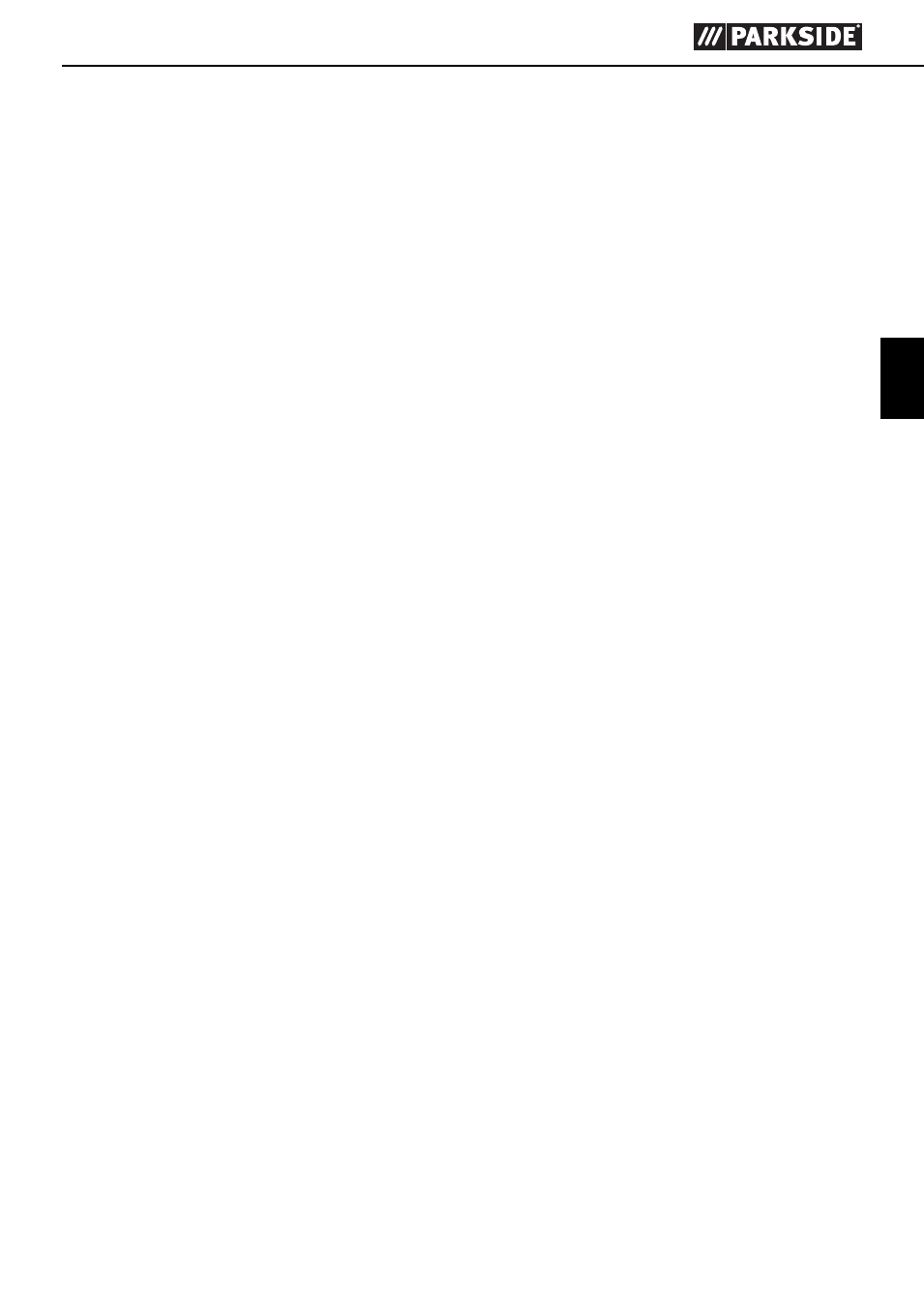Parkside PWS 125 A1 User Manual
Page 56

53
PWS 125 A1
GB
MT
Further special safety
advice for disc-cutting
a) Avoid snagging the cutting disc and do not use
too much contact pressure. Do not attempt to
make excessively deep cuts. Overloading the
cutting disc increases the load and the tendency
of the disc to twist or snag in the cut, making
kickback or disc breakage more likely.
b) Avoid the area in front of or behind the rotat-
ing cutting disc. If the cutting disc is moving
away from you at the point of constraint in the
workpiece, then, in the event of a kickback, the
electrical power tool and the rotating disc may
be thrown towards you.
c)
If the cutting disc jams or you stop work for
a while, switch the device off and hold it until
the disc comes to a complete stop. Never at-
tempt to pull the still rotating cutting disc out
of the cut as this could cause kickback. Deter-
mine and rectify the reason for the jamming.
d) Do not switch on the device if the cutting disc
is in the workpiece. Allow the cutting disc to
reach full speed before carefully continuing
with the cut. Otherwise the disc could snag,
jump out of the workpiece or cause a kickback.
e) Support boards or workpieces whilst cutting
to reduce the risk of kickback caused by a
jammed cutting disc. Large workpieces may
bend under their own weight. The workpiece
must be supported to both sides of the cutting
disc and particularly near the cutting disc and
at the workpiece edge.
f)
Be particularly careful when pocket cutting in
existing walls or other areas where you can-
not see what you are cutting into. The cutting
disc plunged into the surface could cut through
gas or water pipes, electricity cables or other
objects and cause kickback.
Special safety advice for
abrading using sandpaper
■
Do not use over-sized sanding sheets. Follow
the manufacturer’s recommendations for
sanding sheet size. Sanding sheets that project
beyond the backing pad could cause injury
in addition to jamming, tearing of the sheet or
kickback.
Special safety advice for polishing
■
Do not use the polishing bonnet if it has
any loose parts, in particular the fastening
cords. Tuck the fastening cords away or trim
them. Loose fastening cords rotating with the
attachment could catch your fi ngers or become
trapped in the workpiece.
Special safety advice for working with
wire brushes
a) Bear in mind that wire brushes lose pieces of
wire during normal use. Do not overload the
wires by applying too much pressure. Flying
pieces of wire can very easily penetrate thin
clothing and / or skin.
b) Use a guard, if recommended, but make
sure that the wire brush does not come into
contact with the guard. The diameters of disc
brushes and cup brushes can increase due to
contact pressure and centripetal forces.
Safety advice for angle grinders
■
DANGER OF ELECTRIC SHOCK! Do not
operate the device if the mains lead or mains
plug is damaged.
■
DANGER OF ELECTRIC SHOCK! Do not
touch the mains lead if it becomes damaged
or cut through while you are using the device.
Pull the plug out of the mains socket immediate-
ly and have the device repaired by a suitably
qualifi ed person or at your service centre.
■
DANGER OF ELECTRIC SHOCK! Do not oper-
ate the device if it is damp and do not use it in a
damp environment.
■
DANGER OF ELECTRIC SHOCK! If you
use the device outdoors, always connect it
through a residual current device (RCD) with
a maximum trip current of 30 mA. If using an
extension lead, always use one that is approved
for outdoor use.
■
Do not suspend or carry the device by the
mains lead. Always work with the mains lead
leading away from the rear of the device.
Otherwise the device could be damaged.
■
Grinding discs must be carefully kept and han-
dled in accordance with the manufacturer’s
instructions. Otherwise they could be damaged.
IB_102828_PWS125A1_LB5.indb 53
22.08.14 11:40